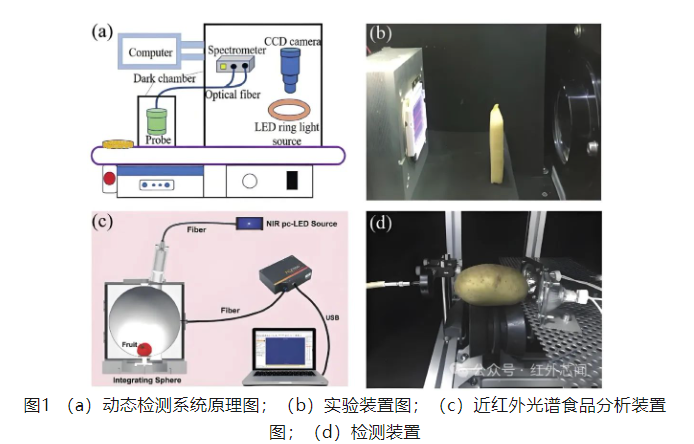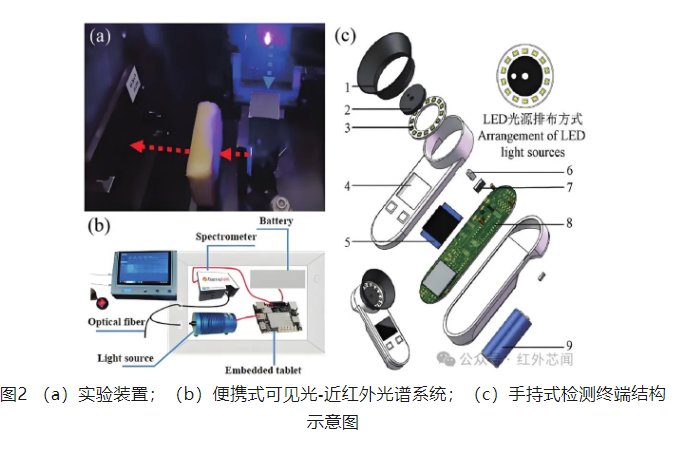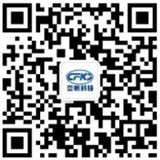06
2024
-
12
Overview: Research Progress on the Application of Near-Infrared Spectroscopy Rapid Analysis Technology
Author:
Near-infrared spectroscopy detection technology has advantages such as non-invasiveness, high sensitivity, fast response speed, and high efficiency, and has been widely applied in fields such as agriculture, food, clinical medical examinations, and drug development. However, one of the current bottlenecks it faces is the difficulty in achieving real-time online detection, miniaturization of devices, and deep detection.
According to a report by Mems Consulting, the research team from Henan University of Technology has summarized the research progress of near-infrared spectroscopy detection technology in food analysis, agricultural production, biomedicine, and drug analysis. They analyzed in detail the composition of spectral detection devices, spectral acquisition modes, spectral data processing, and detection models during the near-infrared detection process, explaining the impact of data processing methods on detection accuracy and results. Finally, they discussed the development direction of near-infrared spectroscopy detection technology and provided an outlook on its application prospects. The related research was published in the journal 'Chemical Bulletin' under the title 'Research Progress on the Application of Near-Infrared Spectroscopy Rapid Analysis Technology'.
Application of near-infrared spectroscopy detection technology in food analysis.
As people pay more attention to food safety issues, food detection technology has increasingly attracted the attention of academia and industry. Near-infrared spectroscopy technology, as a non-invasive, rapid, and efficient analytical method, can be used not only for the analysis of food components but also to quickly obtain a large amount of information about food without destroying the samples, such as the sugar content, soluble substances, and acidity of fruits, the starch content, mold, and skin damage of grains, and the flavor, texture, and safety quality of vegetables. Therefore, near-infrared spectroscopy-based detection technology has become a key tool in the food detection industry, providing a reliable means for food producers and regulatory agencies.
In 2018, researchers led by Jiang used near-infrared spectroscopy combined with the CC-PLSR-RBFNN (correlation coefficient method, partial least squares regression, radial basis function neural network) calibration model to determine the starch content in corn. In recent years, the contamination of deoxynivalenol (DON) in wheat in China has become severe, making the identification and removal of fungal contamination in wheat crucial. This has also raised higher requirements for near-infrared spectroscopy detection technology.Researchers.Combined visible-near-infrared spectroscopy (Vis-NIR) technology with computer vision to achieve online differentiation and detection of normal and DON-contaminated wheat grains. As shown in Figure 1(a), the device uses a halogen lamp as the light source, and a diffuse reflection probe transmits the diffuse reflection signal to a fiber optic spectrometer (wavelength range of 380 - 1050 nm/950 - 1690 nm). In 2019, Wang and others.Researchers.Proposed a non-destructive food quantitative analysis method based on near-infrared spectroscopy technology. This method uses broadband NIR-LED devices (wavelength range of 650 - 1200 nm) and an FLS920 fluorescence spectrophotometer to measure the transmission spectrum of food, as shown in Figure 1(b). In 2020, Huang and others.Researchers.Detected the freshness of different types of fruits by measuring their near-infrared absorption. During the detection process, fruit samples were placed in an integrating sphere while using a fiber-coupled spectrometer to record the reflected near-infrared spectrum of the samples, as shown in Figure 1(c). In 2020, Han and others.Researchers.Proposed a method for non-destructive identification of black-hearted potatoes based on near-infrared spectroscopy technology. The experiment used a 50 W halogen lamp as the light source and employed a PG2000 spectrometer (spectral range of 368 - 1039 nm) to collect the transmission spectrum of the samples, as shown in Figure 1(d).

In 2021, researchers led by Cui detected the sugar content in apples based on near-infrared spectroscopy technology and studied the effect of sugar content on transmission intensity. They used a self-made pc-LED device as the near-infrared light source, as shown in Figure 2(a). In 2020, researchers led by Qin used near-infrared spectroscopy technology to predict the total volatile basic nitrogen (TVB-N) content in frozen pork samples. As shown in Figure 2(b), the experiment used a broadband halogen lamp as the light source, and a reflection probe transmitted the acquired diffuse reflection signal to the NIR Quest 512 spectrometer (spectral range of 899.20 - 1724.71 nm). In 2021, researchers led by Guo Zhiming used near-infrared spectral signals in the range of 515 - 870 nm to detect the quality of apples (soluble solid content, hardness, and vitamin C content). The experiment used self-made near-infrared detection equipment for spectral acquisition and result analysis, as shown in Figure 2(c).

In summary, during the near-infrared detection process, by analyzing the spectral characteristics generated by the interaction between near-infrared spectra and chemical components in food, it is possible to quickly and accurately identify the components and properties of food. Currently, detection research based on near-infrared detection technology has been conducted on foods such as pork, fruits, peanuts, wheat, and corn. However, in most studies, the light sources used are halogen lamps and LEDs, and the detection results heavily rely on predictive models. The impact of conditions such as the resolution and signal-to-noise ratio of detection instruments on quality analysis results also requires further research.
LATEST NEWS
2025-01-09
Design and Development of Full-Spectrum Photodetectors
In recent years, the booming optoelectronic industry has changed the world and extended into many aspects of life. Among them, photodetectors (PDs) with a wide response bandwidth from deep ultraviolet to visible to near-infrared serve as important optoelectronic components and play a key role in daily life.
2025-01-08
Black arsenene multi-spectral integrated field-effect transistors, aiding high-resolution imaging and enhanced secure communication.
With the development of modern communication technology, the demand for broadband, room-temperature infrared, and terahertz (THz) detectors has rapidly increased. These detectors play a crucial role in fields such as telecommunications, security inspection, non-destructive testing, and medical diagnostics. However, existing optical detectors face challenges such as high intrinsic dark current and the need for low-temperature cooling, which limit their efficiency in detecting low-energy photons. Particularly in the terahertz band, the photon energy is insufficient to excite electron transitions from the valence band maximum (VBM) to the conduction band minimum (CBM), making effective optoelectronic conversion difficult. Therefore, researchers have been seeking ultra-broadband detectors that can operate at room temperature and respond to wavelengths ranging from visible light to the terahertz band.
2024-12-30
Laser-based tiered neurons achieve high-speed reservoir computing.
Neuromorphic computing is a computational paradigm that simulates the functions and architecture of biological neurons. A single biological neuron is a powerful computational unit with information processing capabilities, information transmission abilities, and memory functions. Therefore, it is crucial to design a photonic neuromorphic processor that can truly emulate the powerful computational functions of biological neurons.
2025-01-01
Design and Development of Full-Spectrum Photodetectors
In recent years, the rapidly growing optoelectronic industry has changed the world and extended into many aspects of life. Among them, photodetectors (PDs) with a wide spectral response from deep ultraviolet to visible to near-infrared serve as important optoelectronic components and play a key role in daily life.
2024-12-31
High-sensitivity quantum dot photodetectors from deep ultraviolet to near-infrared
In recent years, the rapidly growing optoelectronic industry has changed the world and extended into many aspects of life. Among them, photodetectors (PD) with deep ultraviolet-visible-near infrared full spectrum detection response serve as important optoelectronic components, playing a key role in daily life.

